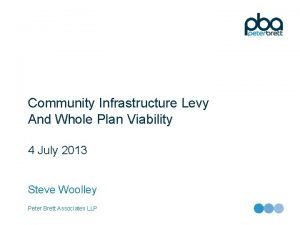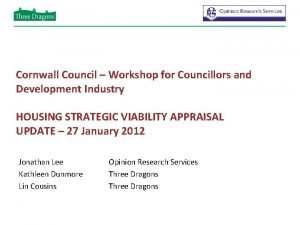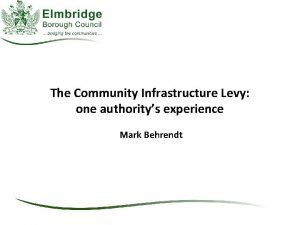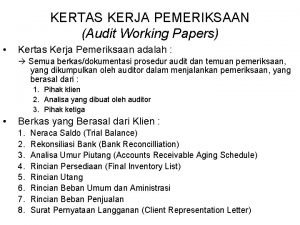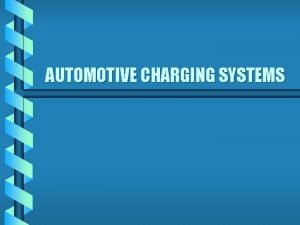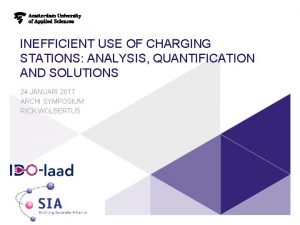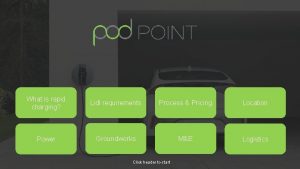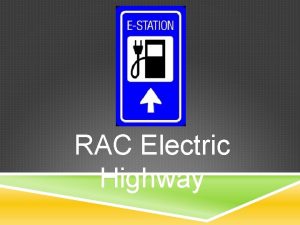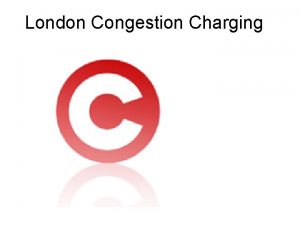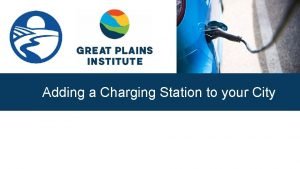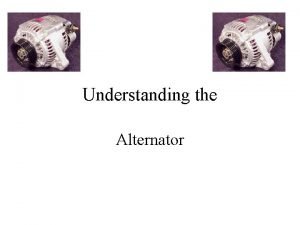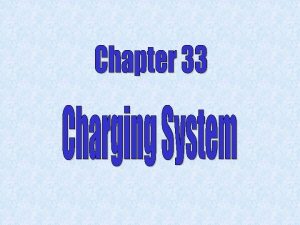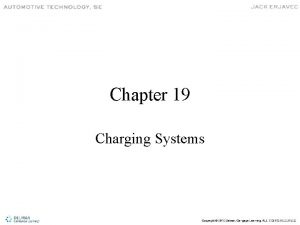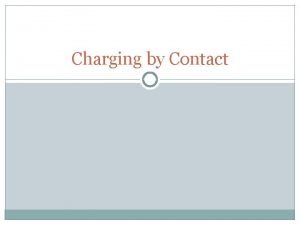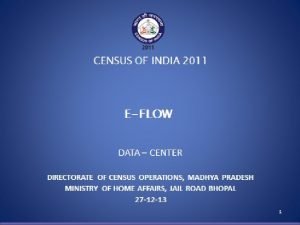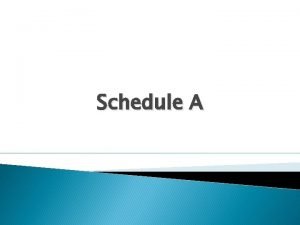Community Infrastructure Levy Charging Schedule Community Infrastructure Levy






























- Slides: 30

Community Infrastructure Levy – Charging Schedule

Community Infrastructure Levy • Developing a CIL Charging Schedule 1. identify the infrastructure funding gap 2. develop the draft charging schedule (viability assessment and infrastructure planning) 3. set the levy, two rounds of consultation, examination & adoption 4. Council to operate as a collecting authority • Mayor’s CIL 1 April 2012 – Collecting Authority

Community Infrastructure Levy – Early Essentials • Establish a project team – – Planning Policy Development Management Infrastructure Planning Service providers (internal (education / capital delivery hub) and external (health)) – Consultants – viability, infrastructure and project management • Project management important • Corporate ‘buy in’ essential • Communication (internal and external)

London Borough of Croydon’s CIL - Programme • Evidence Base – Infrastructure Delivery Plan – Infrastructure Cost Report – Viability Report • Preliminary Draft Charging Schedule – September – October 2011 • Draft Charging Schedule – January – February 2012 • Submission – June 2012 • Examination – September 2012 • Adoption – February 2013 • Introduction – April 2013

Preliminary Draft Charging Schedule CIL Rates

Preliminary Draft Charging Schedule

Preliminary Draft Charging Schedule Issues arising from representations: 1. Concern from developers on the impact on viability. 2. Requests for a facility to pay by instalments 3. Requests for Croydon to allow exceptional relief 4. Challenge by London First on the technical basis of viability assessment

Draft Charging Schedule • Reported consultation outcomes to LDF Board, CMT, Leader and Cabinet member • Sought approval for next steps • Continued dialogue with development industry and key stakeholders • Undertook additional office viability assessments • Increased business rate in CMC to £ 120 sq m to better align with viability evidence • Agreed the introduction of an instalment policy • Agreed to trigger exceptional relief

Draft Charging Schedule CIL Rates – January 2012 Table 2: Proposed Schedule of Rates Proposed CIL rate £ per m 2 Use Croydon Metropolitan Centre Rest of the Borough Residential –Dwelling Houses (C 3) 0 120 Business (B 1, B 2 -B 8) 120 0 Institutions (C 2) (D 1) 0 All other uses 120

Draft Charging Schedule Examination • Submission - June 2012 • Examination - September 2012 • Main Issues Is the charging schedule supported by background documents containing appropriate available evidence? Is the charging rate informed by and consistent with the evidence? Does the evidence demonstrate that the proposed charge rate would not put the overall development of the area at serious risk?

Draft Charging Schedule Examination • Largely uncontested extent of infrastructure needed to support the growth set out in the Core Strategy • Largely uncontested infrastructure funding gap • Contested • Development viability assessment site sample size sufficient • Two charging zones justified • CIL rates supported by the evidence • Should certain community uses be exempt from CIL • Do the CIL rates put overall development of the area at serious risk

Draft Charging Schedule Examiner’s Report In setting the CIL charging rate the Council has had regard to detailed evidence on infrastructure planning and evidence relating to economic viability. It has struck a credible balance between, on the one hand, the need to achieve a reasonable level of income to address the acknowledged gap in infrastructure funding and, on the other, the need to ensure that the overall development of Croydon is not put at serious risk.

CIL and Section 106 • Non Statutory CIL and Planning Obligations Guidance • Role of Section 106 • Affordable housing • Development mitigation – Regulation 122 • Non material contributions • CIL • Regulation 123 list • 5 pooled contributions • Instalment policy • Exceptional relief • Lawful use / Demolition

Community Infrastructure Levy and Local Plan - Strategic Policies Joint Submission and Examination

Joint CIL and CLP Submission and Examination • • • CLP and CIL PINS SLAs – September 2011 CLP Submission – April 2012 CIL Submission – June 2012 CLP and CIL Examinations – September 2012 Inspector’s and Examiner’s Reports – December 2012

Joint CIL and CLP Submission and Examination – Benefits and Efficiencies • • Appointment of one programme officer Coordinated submission Evidence base remains relevant Coordinated Examination arrangements Period of Examinations focus Same Inspector and Examiner Coordinated receipt of reports and adoption

Joint CIL and CLP Submission and Examination – Risks • • Public and stakeholders aware of difference Evidence base coordinated Consistent messages at both examinations Officers and consultants available

Community Infrastructure Levy – Payment and Collection

Introduction • Level of understanding regarding the requirements and implications still developing. • Requirements largely set out in the 2010, 2011 and 2012 CIL Regulations. • Croydon has been operating as collecting authority since April 2012 – Mayoral CIL. • Borough’s CIL 1 April 2013 – Council February. • Equally, if not more, challenging than developing a CIL Charging Schedule.

Early Essentials • Develop a good understanding of the CIL regulations. • Acknowledge CIL payment and collection is a project and establish a project team. • Boroughs should produce ‘theoretical’ flowcharts – have to be clear what needs to be achieved (the who, when and how). • Revise the flowcharts to reflect particular borough circumstances – e. g. presence of capital delivery hub. • Share knowledge with stakeholders and developers – increasing awareness is essential.

Croydon’s Four Block Process 1. Planning services – planning application / CIL 2. Exchequer services – collection 3. Delivery – corporate function 4. Planning services - monitoring

Collecting Authority Project Group Members Project group members • Planning Policy • Development Management • Planning Administration • Exchequer Services • Corporate Finance • Land Charges • Legal • Capital Delivery Hub / Capital Finance • IT

Planning services 1. Planning application submission 2. Notice of chargeable development 3. Assumption of liability 4. Possible instalment policy 5. CIL relief submitted, assessed and calculated 6. Planning permission granted 7. Liability notice issued 8. Possibly appeal lodged 9. Commencement notice submitted 10. Commencement date fixed

Planning services • • Strongly encourage boroughs to host generic guidance and forms on their websites and develop borough specific guidance and forms (if necessary). If not already, boroughs should start communication regarding CIL through developer forums, the Pre App process and planning application correspondence. Essential boroughs are clear what and when CIL material should ideally be submitted. Important the development industry familiarise themselves with the requirements and processes.

Exchequer services • Bill / Demand Notice issued – possibly in instalments Payment received • Land charges notified at all stages • CIL income transferred to Infrastructure Finance Group or GLA Non payment – Exchequer Services and Planning Services Function • Recovery action commences • Reminder • Summons issued • Liability order and costs issued • Recovery action taken • Stop Notice process (Planning Service Function)

Delivery • Transfer Mayoral CIL to GLA Infrastructure Finance Group • Manage and monitor CIL and Section 106 income • Assign income to prioritised Infrastructure Delivery Plan projects / Capital Programme • Transfer money to external parties / providers • Monitor delivery of projects

Planning services Authorities Monitoring Report • Annual demand • Annual Collection • Annual Spend • Annual schedule of infrastructure delivery • Updated Infrastructure Delivery Plan published • Unspent CIL • Outstanding CIL Collection

Collection Flow Chart Planning Application Receive Liability Notice (consider appeal) Submit Notice of Chargeable Development Submit Commencement Notice minimum (1 day before commencement) Submit Assumption of Liability Notice Grant planning permission Receive Notice of Chargeable Development Receive Assumption of Liability Notice and acknowledge Submission of relief forms / Instalment policy engaged Issue Liability Notice Liable Party Developer/ Land owner) Receive Demand Notice Commencement development and start making payments Receive Commencement Notice and acknowledge Determine the deemed commencement date Issue Demand Notice Collecting authority Receive payments and issue receipts for each one received

CIL Collecting Authority - Position Mayoral CIL – April 2012 • 146 Liability Notices - £ 1. 1 m • 9 Demand Notices - £ 74 k • No formal enforcement action Additional thoughts • Relief protocol • Monitoring commencement when no commencement notice • Don’t forget PD is CIL liable • Pre CIL introduction Section 106 pressure

Key Messages – Boroughs should provide guidance – All necessary documentation should be on the borough’s web site – CIL must be integral to pre application discussions – Submit required information with the planning application and in accordance with the desired process – Make clients aware of CIL – Corporate support for CIL implementation essential
 Community infrastructure levy questions
Community infrastructure levy questions Community infrastructure levy cornwall
Community infrastructure levy cornwall Elmbridge cil charging schedule
Elmbridge cil charging schedule Kertas kerja pemeriksaan
Kertas kerja pemeriksaan Automotive charging system
Automotive charging system Example of charge
Example of charge Charging capacitor formula
Charging capacitor formula Charging stations
Charging stations Inductor energy formula
Inductor energy formula Charging by conduction examples
Charging by conduction examples How does ralph react when a boar comes charging
How does ralph react when a boar comes charging Conductive wireless charging
Conductive wireless charging Charge by contact
Charge by contact Charging by induction
Charging by induction Charging pyramid
Charging pyramid Solar panel table
Solar panel table Lidl ev charging
Lidl ev charging Electrostatic force definition
Electrostatic force definition Rac electric highway charging station
Rac electric highway charging station Mitsuba systems india pvt ltd
Mitsuba systems india pvt ltd Charging by conduction
Charging by conduction Virta global charging station
Virta global charging station Example of charge by contact
Example of charge by contact Study of stationary electric charges is
Study of stationary electric charges is Eagle oath and charge
Eagle oath and charge Dts gate motor limits
Dts gate motor limits Charging order florida
Charging order florida Charging by contact
Charging by contact Ev charger installation montana
Ev charger installation montana Physics 241
Physics 241 Santa clara fleet management electric vehicle charging
Santa clara fleet management electric vehicle charging
